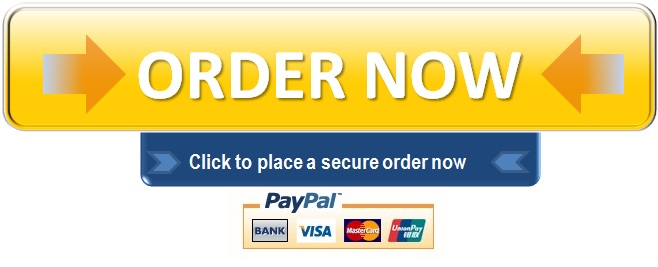FIND A SOLUTION AT Academic Writers Bay
College of Administrative and Financial Sciences Assignment 3 Decision Making & Problem Solving (MGT312) Deadline for students: End of Week 13 (4/12/2021@ 23:59) (To be posted/released to students on BB anytime in Week 4) Course Name: Student’s Name: Course Code: MGT312 Student’s ID Number: Semester: 1st CRN: Academic Year: 1442/1443 H, First Semester For Instructor’s Use only Instructor’s Name: Dr. Asif Hasan Students’ Grade: Level of Marks: Instructions – PLEASE READ THEM CAREFULLY ❖ This assignment is an individual assignment. ❖ Due date for Assignment 1 is by the end of Week 7 (23/10/2021). ❖ The Assignment must be submitted only in WORD format via allocated folder. ❖ Assignments submitted through email will not be accepted. ❖ Students are advised to make their work clear and well presented. This also includes filling your information on the cover page. ❖ Students must mention question number clearly in their answer. ❖ Late submitted assignments will NOT be entertained. ❖ Avoid plagiarism, the work should be in your own words, copying from students or other resources without proper referencing will result in ZERO marks. No exceptions. ❖ All answered must be typed using Times New Roman (size 12, double-spaced) font. No pictures containing text will be accepted and will be considered plagiarism). Submissions without this cover page will NOT be accepted. Course Learning Outcomes-Covered • Define different perspectives and concepts of problem solving in diverse contexts and business situations. (C.L.O :2) • Demonstrate decision tools and employ appropriate analytical business models to break down complex issues. (C.L.O :4) • Demonstrate effective leadership skills and teamwork capacity for efficient decision making with the problem owners and other stakeholders as either a team member or a team leader. (C.L.O :5) Assignment Instructions: • Log in to Saudi Digital Library (SDL) via University’s website • On first page of SDL, choose “English Databases” • From the list find and click on EBSCO database. • In the search bar of EBSCO find the following article: Title: “How to Make Better Decisions with Less Data” Author: Tanya Menon and Leigh Thompson Date of Publication: November 07, 2016 Published: Harvard Business Review Assignment Questions: (Marks 05) Read the attached article titled as “How to Make Better Decisions with Less Data” by Tanya Menon and Leigh Thompson, published in Harvard Business Review, and answer the following Questions: 1. Summarize the article and explain the main issues discussed in the article. (In 500-600 words) (Marks 2) 2. Discuss in relations to what you have learnt in the course about the four steps of intentional thought to help convert data into knowledge and wisdom? Use additional reference to support your argument. (In 200-400 words) (Marks 1.5) Critical Thinking Question 3. If you collect too much information for analyzing a decision, you can suffer from analysis paralysis, where you spend too much time thinking about a decision rather than making one. Recall a major financial decision you made recently, such as of a car or housing purchase or rental. Describe your process for making the decision. How could analysis paralysis have affected this process? (In 200-400 words) (Marks 1.5) STRATEGIC THINKING How to Make Better Decisions with Less Data by Tanya Menon and Leigh Thompson NOVEMBER 07, 2016 Maria, an executive in financial services, stared at another calendar invite in Outlook that would surely kill three hours of her day. Whenever a tough problem presented itself, her boss’s knee-jerk response was, “Collect more data!” Maria appreciated her boss’s analytical approach, but as the surveys, reports, and stats began to pile up, it was clear that the team was stuck in analysis paralysis. And despite the many meetings, task forces, brainstorming sessions, and workshops created to solve any given issue, the team tended to offer the same solutions — often ones that were recycled from prior problems. COPYRIGHT © 2016 HARVARD BUSINESS SCHOOL PUBLISHING CORPORATION. ALL RIGHTS RESERVED. 2 As part of our research for our book, Stop Spending, Start Managing, we asked 83 executives how much they estimated that their companies wasted on relentless analytics on a daily basis. They reported a whopping $7,731 per day — $2,822,117 per year! Yet despite all of the data available, people often struggle to convert it into effective solutions to problems. Instead, they fall prey to what Jim March and his coauthors describe as “garbage can” decision making: a process whereby actors, problems, and possible solutions swirl about in a metaphorical garbage can and people end up agreeing on whatever solution rises to the top. The problem isn’t lack of data inside the garbage can; the vast amount of data means managers struggle to prioritize what’s important. In the end, they end up applying arbitrary data toward new problems, reaching a subpar solution. To curb garbage-can decision making, managers and their teams should think more carefully about the information they need to solve a problem and think more strategically about how to apply it to their decision making and actions. We recommend the data DIET approach, which provides four steps of intentional thought to help convert data into knowledge and wisdom. Step 1: Define When teams and individuals think about a problem, they likely jump right into suggesting possible solutions. It’s the basis of many brainstorming sessions. But while the prospect of problem solving sounds positive, people tend to fixate on familiar approaches rather than stepping back to understand the contours of the problem. Start with a problem-finding mindset, where you loosen the definitions around the problem and allow people to see it from different angles, thereby exposing hidden assumptions and revealing new questions before the hunt for data begins. With your team, think of critical questions about the problem in order to fully understand its complexity: How do you understand the problem? What are its causes? What assumptions does your team have? Alternately, write about the problem (without proposing solutions) from different perspectives — the customer, the supplier, and the competitor, for example — to see the situation in new ways. Once you have a better view of the problem, you can move forward with a disciplined data search. Avoid decision-making delays by holding data requests accountable to if-then statements. Ask yourself a simple question: If I collect the data, then how would my decision change? If the data won’t change your decision, you don’t need to track down the additional information. Step 2: Integrate Once you’ve defined the problem and the data you need, you must use that information effectively. In the example above, Maria felt frustrated because as the team collected more and more pieces of the jigsaw puzzle, they weren’t investing the same amount of time to see how the pieces fit together. Their subconscious beliefs or assumptions about problems guided their behavior, causing them to follow the same tired routine time and time again: collect data, hold meetings, create strategy moving forward. But this is garbage-can decision making. In order to keep the pieces from coming together in an arbitrary fashion, you need to look at the data differently. COPYRIGHT © 2016 HARVARD BUSINESS SCHOOL PUBLISHING CORPORATION. ALL RIGHTS RESERVED. 3 Integration lets you analyze how your problem and data fit together, which then lets you break down your hidden assumptions. With your team, create a KJ diagram (named after author Kawakita Jiro) to sort facts into causal relationships. Write the facts on notecards and then sort them into piles based on observable relationships — for example, an increase in clients after a successful initiative, a drop in sales caused by a delayed project, or any other data points that may indicate correlated items or causal relationships. In doing this, you can create a visual model of the patterns that emerge and make connections in the data. Step 3: Explore At this point in the process, you may have some initial ideas or solutions based on your KJ diagrams. Now’s the time to develop them. To facilitate collaborative exploration, one of our favorite exercises (often used in art schools) is what we call the passing game. Assign distinct ideas to each team member and give each individual five minutes to develop it by drawing or writing in silence. Then have them pass their work to a teammate, who continues drafting the idea while they take over a teammate’s creation. Discuss the collaborative output. Teammates recognize how it feels to give up “ownership” of an idea and how it feels to both edit and be edited; they also recognize their implicit assumptions about collaboration. The new perspective forces them to confront directions that they didn’t choose or never would have considered. Indeed, you can add multiple sequential passes (like a telephone game) to demonstrate the idea’s unpredictable evolution as three or four teammates play with the initial ideas. After allowing people this space for exploration, discuss the directions that are most fruitful. Step 4: Test The last dimension requires team members to use their powers of critical thinking to consider feasibility and correct for overreach. Design tests to see if your plan forward will work. Under which types of situations will the solution fail? Select a few critical tests and run them. While people often over-collect data that supports their priors, people under-collect disconfirming data. By running even a single test that fights confirmation biases, you can see what you need to see, even if you don’t want to. The solution to garbage-can decisions isn’t cutting out data entirely. Thinking strategically about your data needs pushes you to do more with less — widening, deepening, integrating, extending, and testing the data you do have to convert it into knowledge and wisdom. In practicing the mental exercises above with your team, you can curb your appetite for data while getting better at digesting the data you have. Tanya Menon (menon.53@osu.edu) is an associate professor of Management and Human Resources at the Ohio State University’s Fisher College of Business. She is the coauthor of Stop Spending, Start Managing: Strategies to Transform Wasteful Habits (Harvard Business Review Press, 2016). COPYRIGHT © 2016 HARVARD BUSINESS SCHOOL PUBLISHING CORPORATION. ALL RIGHTS RESERVED. 4 Leigh Thompson is the J. Jay Gerber Professor of Dispute Resolution and Organizations at the Kellogg School of Management. She is the author of Creative Conspiracy: The New Rules of Breakthrough Collaboration (HBR Press, 2013) and coauthor of Stop Spending, Start Managing: Strategies to Transform Wasteful Habits (HBR Press, 2016). COPYRIGHT © 2016 HARVARD BUSINESS SCHOOL PUBLISHING CORPORATION. ALL RIGHTS RESERVED. 5 Copyright 2016 Harvard Business Publishing. All Rights Reserved. Additional restrictions may apply including the use of this content as assigned course material. Please consult your institution’s librarian about any restrictions that might apply under the license with your institution. For more information and teaching resources from Harvard Business Publishing including Harvard Business School Cases, eLearning products, and business simulations please visit hbsp.harvard.edu.
- WE OFFER THE BEST CUSTOM PAPER WRITING SERVICES. WE HAVE DONE THIS QUESTION BEFORE, WE CAN ALSO DO IT FOR YOU.
- Assignment status: Already Solved By Our Experts
- (USA, AUS, UK & CA PhD. Writers)
- CLICK HERE TO GET A PROFESSIONAL WRITER TO WORK ON THIS PAPER AND OTHER SIMILAR PAPERS, GET A NON PLAGIARIZED PAPER FROM OUR EXPERTS
QUALITY: 100% ORIGINAL PAPER – NO PLAGIARISM – CUSTOM PAPER
Why Choose Us?
- 100% non-plagiarized Papers
- 24/7 /365 Service Available
- Affordable Prices
- Any Paper, Urgency, and Subject
- Will complete your papers in 6 hours
- On-time Delivery
- Money-back and Privacy guarantees
- Unlimited Amendments upon request
- Satisfaction guarantee
How It Works
- Click on the “Place Your Order” tab at the top menu or “Order Now” icon at the bottom and a new page will appear with an order form to be filled.
- Fill in your paper’s requirements in the “PAPER DETAILS” section.
- Fill in your paper’s academic level, deadline, and the required number of pages from the drop-down menus.
- Click “CREATE ACCOUNT & SIGN IN” to enter your registration details and get an account with us for record-keeping and then, click on “PROCEED TO CHECKOUT” at the bottom of the page.
- From there, the payment sections will show, follow the guided payment process and your order will be available for our writing team to work on it.
About AcademicWritersBay.com
AcademicWritersBay.com is an easy-to-use and reliable service that is ready to assist you with your papers 24/7/ 365days a year. 99% of our customers are happy with their papers. Our team is efficient and will always tackle your essay needs comprehensively assuring you of excellent results. Feel free to ask them anything concerning your essay demands or Order.
AcademicWritersBay.com is a private company that offers academic support and assistance to students at all levels. Our mission is to provide proficient and high quality academic services to our highly esteemed clients. AcademicWritersBay.com is equipped with competent and proficient writers to tackle all types of your academic needs, and provide you with excellent results. Most of our writers are holders of master’s degrees or PhDs, which is an surety of excellent results to our clients. We provide assistance to students all over the world.
We provide high quality term papers, research papers, essays, proposals, theses and many others. At AcademicWritersBay.com, you can be sure of excellent grades in your assignments and final exams.


